Lou Leto July 21, 2022 All Feature Vehicles
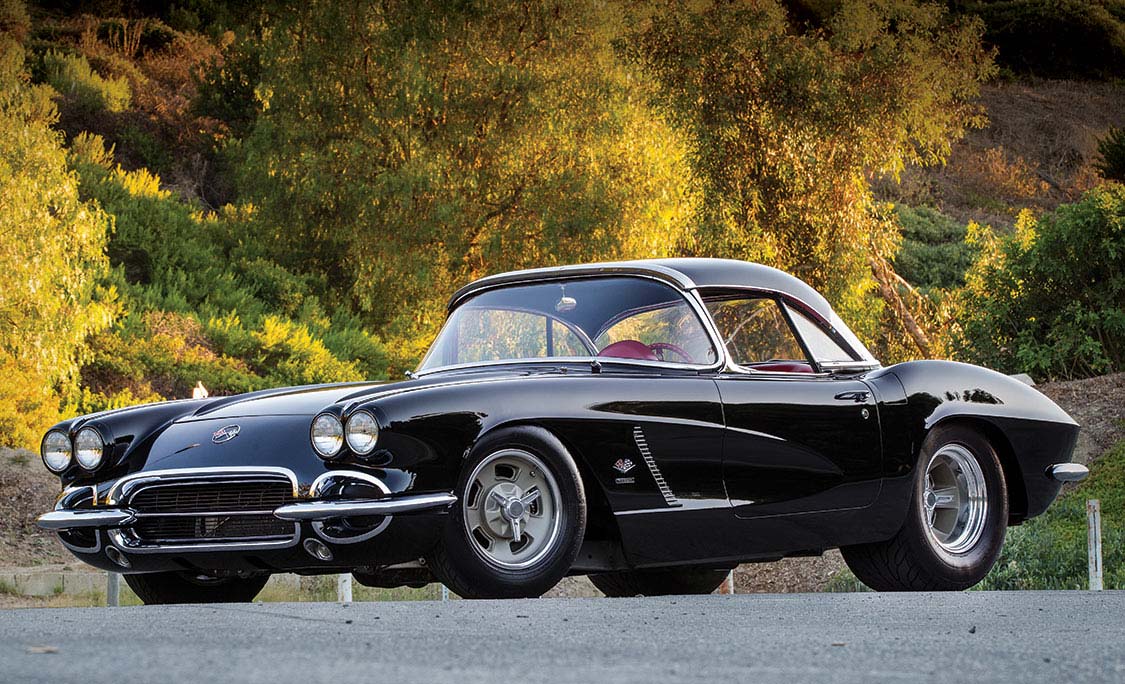
Jerry Bentley could have taken an easy route to his next car. With a last name like his, he could have chosen his namesake vehicle, full of sophistication and elegance, a hand-built luxury machine equipped with ultra-fine appointments and high-tech refinements. It would have been a Bentley and no one would have dared raise a judgmental eyebrow. Or, given the fact that he recently retired from a successful career in the confectionery industry, his next ride could have been a detailed showpiece that was just as sweet. But, since he was immersed in the rich SoCal and Arizona car cultures, smooth and easy just weren’t the direction Jerry was headed in.
After owning a ’55 Chevy Gasser, a ’68 427 Corvette and a ’32 Ford roadster adorned with 3x2s, as well as being involved with his son’s ’69 Z/28, something soft and quiet or all show and no go wasn’t his style. Aside from these undeniable factors, his Arizona neighbor, the legendary drag racer John Loper, also influenced Jerry’s thirst for high horsepower. “I watched Loper build two Gassers,” Jerry said, his facing beaming. Instead, one might say the choice for his next project became channeling all of the above influences.
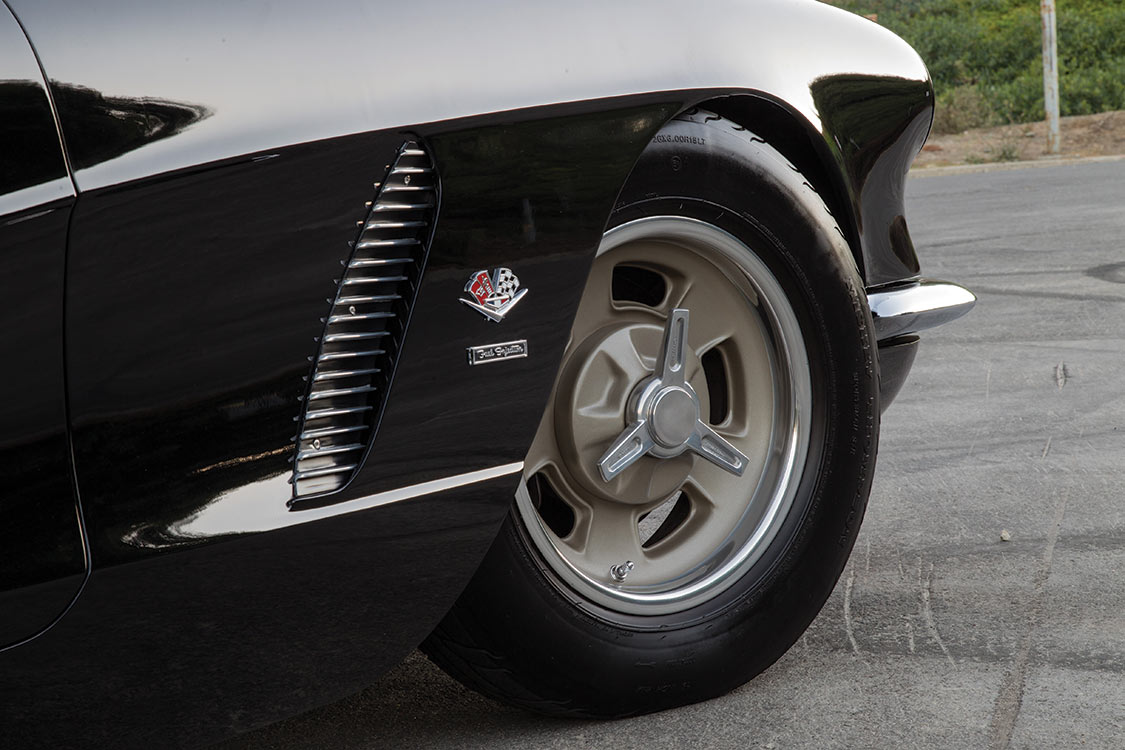
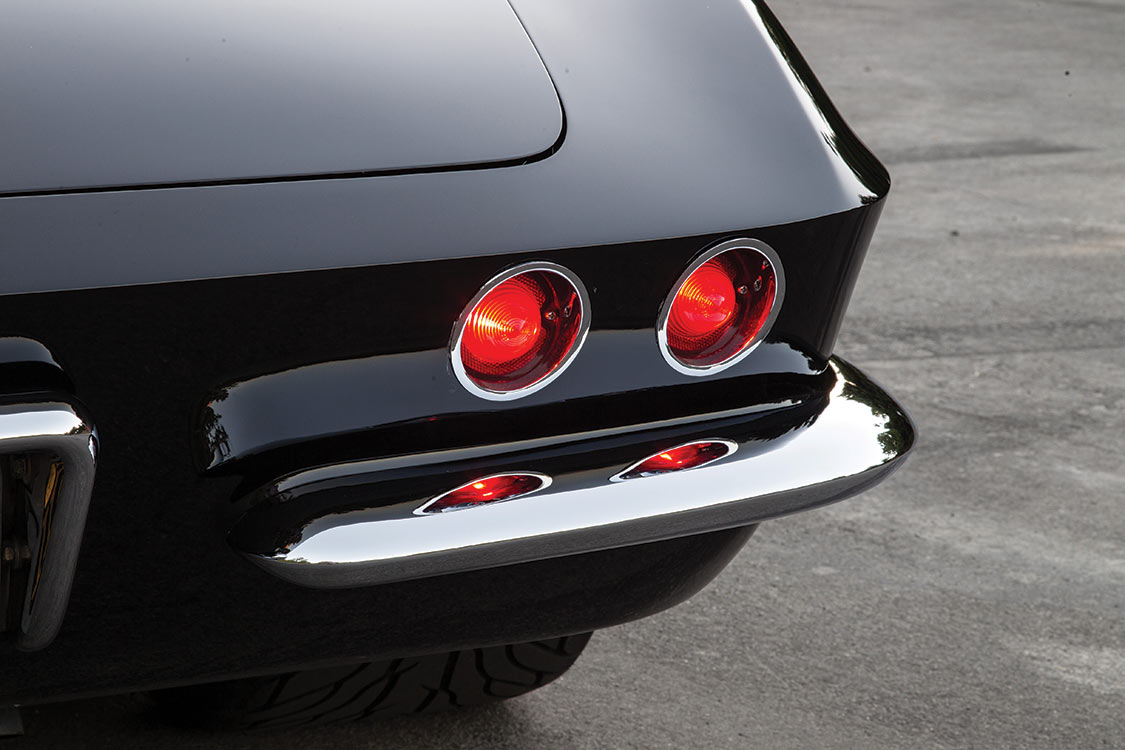
“The target of my next project was a numbers car,” Jerry admitted. In 1993, while combing through the Orange County California AutoTrader, he discovered and purchased a distressed ’62 Corvette. The rode hard and put away wet classic was represented as a “matching numbers” car, making it an intriguing purchase. While the cosmetics were ugly and the components worn, he was able to drive it across the desert to his home in Phoenix. “At the time, it was a two-top, Roman Red car with a black interior, 327 four-barrel carburetor engine and a four-speed tranny. “My plan was to do a complete restoration, top to bottom, and while I had been involved in building the earlier cars, this Corvette was my first big project,” Jerry confessed.
Restoring a period-correct Corvette from this era can be a painstaking process. Chasing authentic, matching-number parts and hardware is time-consuming and costly. Along the way, Jerry was so precise as he sought out new, original black interior components that it took him two years to finish the car. “I was proud that I was doing it correctly, as my plan was to enter serious shows so the vehicle could be judged.” As a sidebar: it’s ironic that later he was transferred and relocated his family to south Orange County (California) before the project was finished, so the Corvette was completed back in the same geographical area where it was found.
As Corvette history goes, 1962 was a very significant year with a combination of lasts and firsts. There were some typical model year changes, giving the last model of the first generation Corvettes (the 1953-62 models are referred to as C1s) a less busy look. Gone was the trim around the side coves and with it there were no two-tone paint options available; only monochromatic exterior paint color schemes. The rearend of the car continued with the quad taillights introduced with the 1961 model, a design that was the signature element of Corvettes for many years to come. It was also the very last year that Corvette had a formal trunk, with a hinged, opening deck lid, that could be easily accessed for rear storage.
After a full restoration, I took the car to the Coast Corvette Show to be judged. It received 90 out of 100 points.
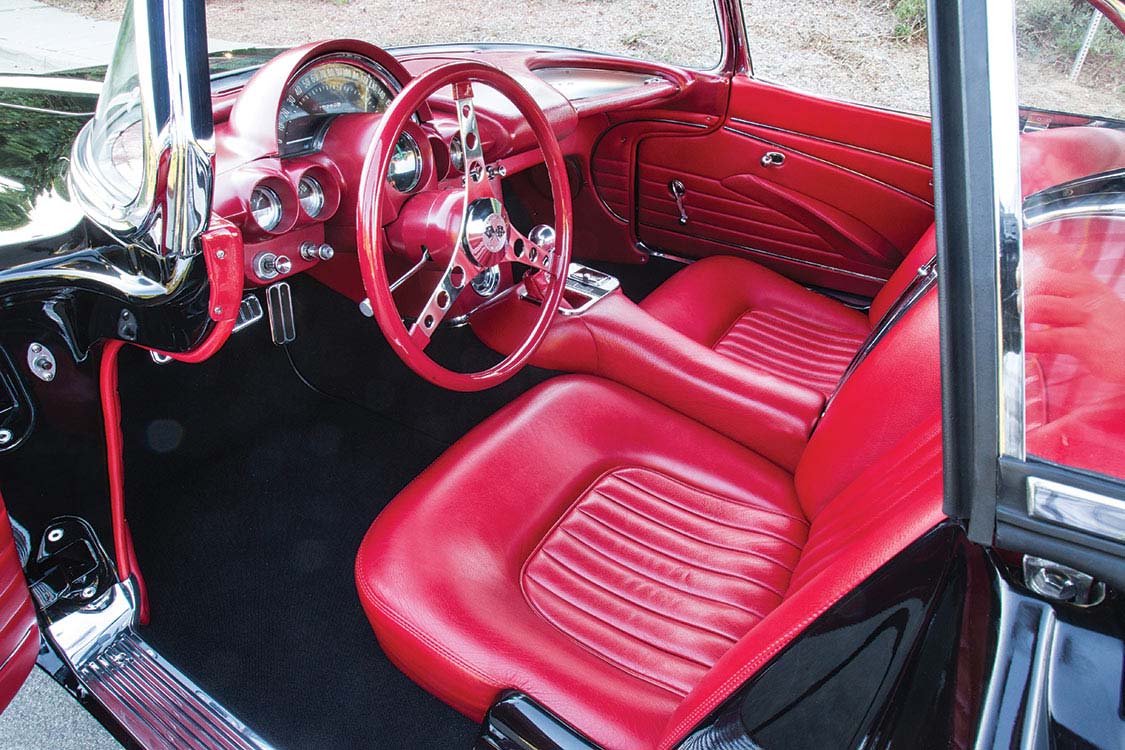
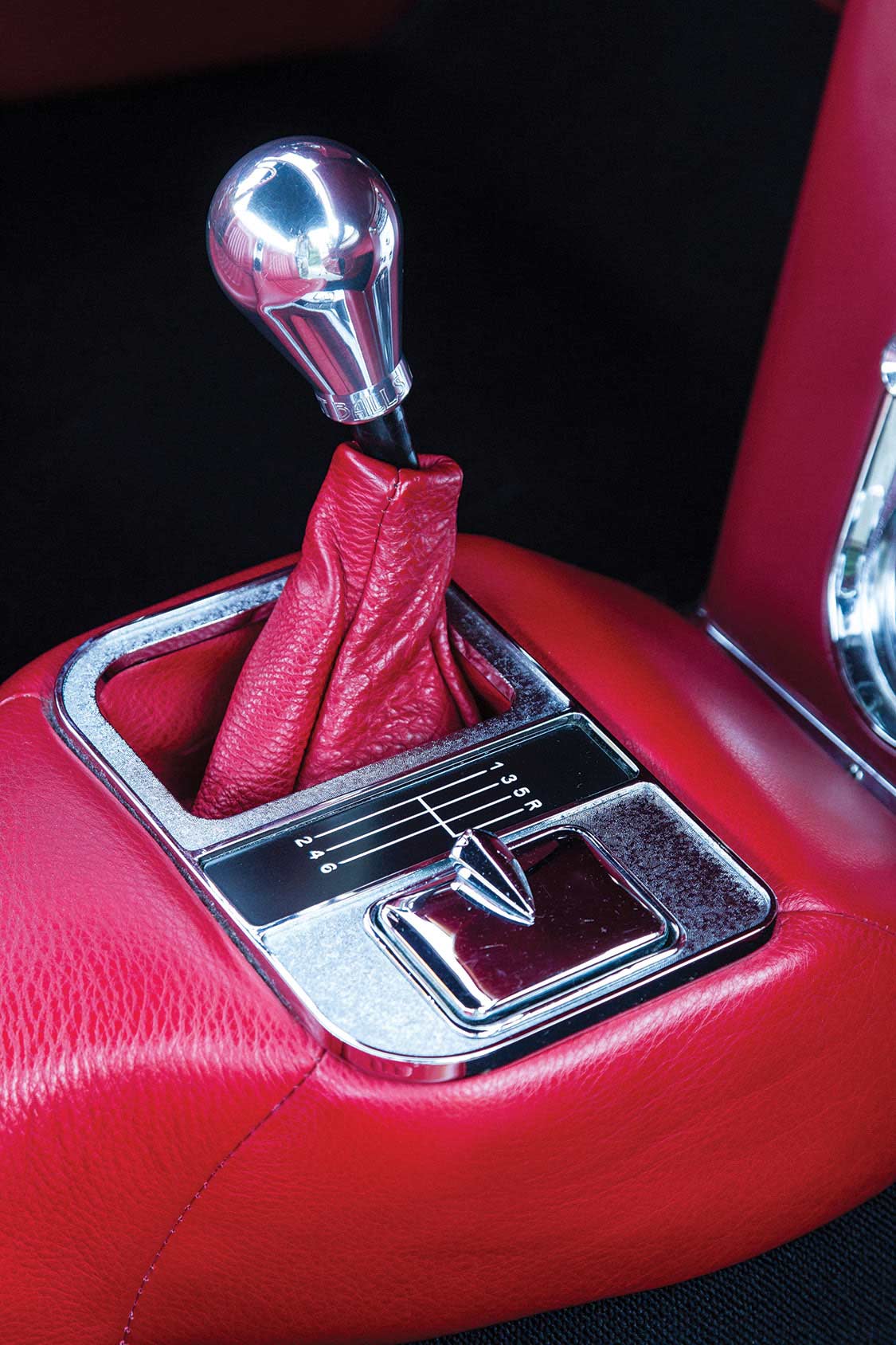
The changes in 1962 were not just aesthetic. The true marker for change, and desirability for future collectors, was mechanical. Already earning the title of America’s Sports Car, the Corvette development team, encouraged by Harley Earl, Bill Mitchell and Zora Arkus-Duntov, did not rest on their laurels. They were hungry for more power, and there was an easy solution by subscribing to the old adage, there is no substitute for cubic inches. The 283 V-8 engines residing under the hoods of the last four years of Corvettes was enlarged by 15%, creating a similar increase in the top horsepower rating of their most radical production engine. Now all 1962 V-8s offered in Corvettes were enlarged to 327 ci. The ’Vette crowd was a performance-oriented group, reflected in the statistic that 77% of the cars sold in ’62 were equipped with a four-speed manual transmission. Nearly all first year 327 base and option engines came with single four-barrel carburetor with increased horsepower ratings; the two four-barrel carb (dual quad) versions of prior years were no longer offered. The exception was the top-of-the-line, high performance engine, which was a high compression, big cam version, again topped with a Rochester fuel-injection system (fuel injection was first offered in 1957), now with a 360-hp output. It made the fiberglass car, weighing less than 3,000 pounds, scream on the street or at the track. The 360-hp engine was an expensive option at nearly $485, which was probably one of the reasons only 1,918 fuelies or F.I. ’Vettes were built during the 1962 Corvette production of more than 14,500 vehicles. It doesn’t take a great quantity for legends to be born.
The following is the evolution of Jerry’s ’62 Corvette that could ultimately be referred to as a special fuel-injection car, and could be considered as F.I. car number 1919.
As Jerry put it, “After a full restoration, I took the car to the Coast Corvette Show to be judged. It received 90 out of 100 points. It was gigged for a bit of dirt found after a swabbing by a Q-tip, along with having one wrong bolt.” Bentley left the show and decided that driving was more important than showing, and within months went back to his hot rod roots. He cut the front coil springs to give the two-seater a more aggressive look via a lower the ride height. He installed Halibrand wheels on his otherwise freshly rebuilt ’Vette. Just a few months following that initial judging experience, Jerry drove the car for the next five years. During that period, he changed the color from Roman Red to Ferrari Pearl Fly Yellow.

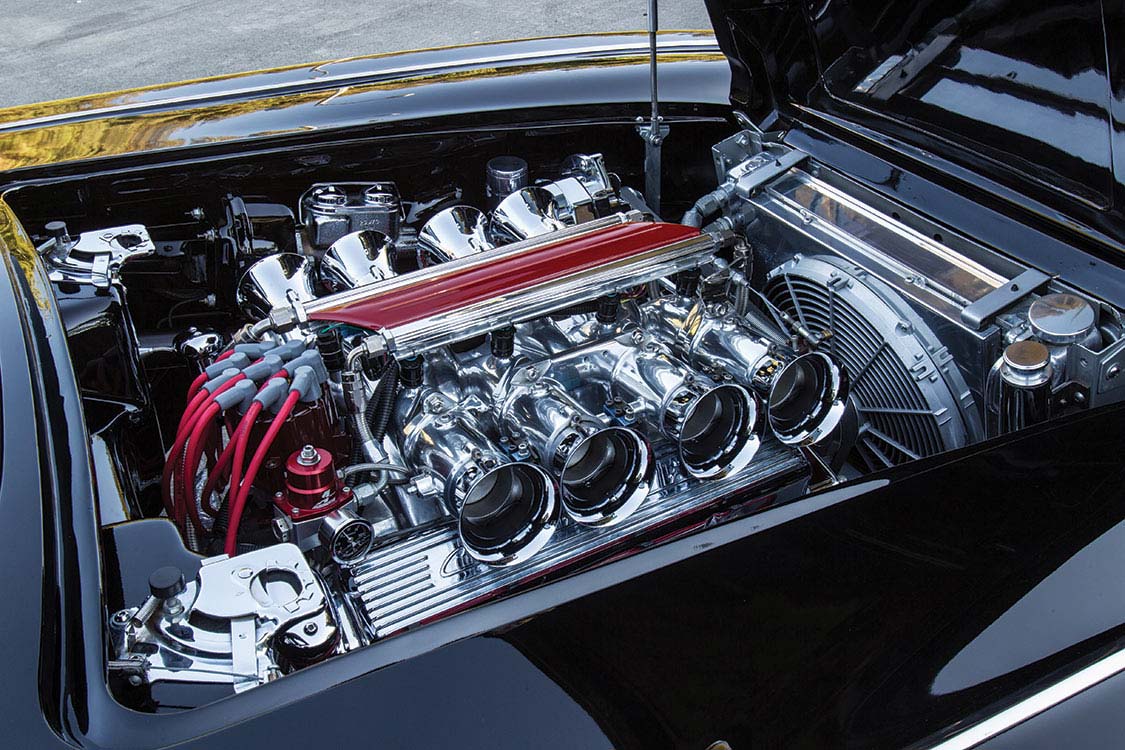
“One day, reading the car mags, I saw a great-looking ’62 ’Vette feature. I decided that I wanted that look,” he explained. The car was once again taken completely apart. However, the project was scheduled for an entirely new direction. The front section of the frame was replaced with a modern C4 Corvette suspension, including power steering. Bigger brakes, with a power booster, and a McLeod clutch were added. The original four-speed manual transmission was swapped for a Tremec six-speed. As much bigger horsepower was planned, the rear was reconfigured with a stout Currie Ford 9-inch rear axle mounted in an engineered four-bar and a coil-over suspended sub-frame. A fabricated rear cross member was given a new radius in order to clear the fully ceramic-coated, large diameter exhaust system that featured Flowmaster mufflers.
That potent power plant meant bigger M/T Sportsman rear tires were needed, so the car was mini-tubbed to accommodate the fatter footprint. He swapped his original Halibrand wheels for a modern, stronger, similar-looking type, still keeping 5×15 front and 12×15 rear staggered sizes.
The entire reconfigured 1962 frame was powder coated. While work was done in two different shops, Jerry offered volumes of compliments about Bryan’s Custom Restorations. “Bryan Barba is still the designated caretaker for the tweaks,” Jerry told Maximum Drive.
In later years, a 406-ci engine, built by legendary race shop Traco Engineering, was installed. A typical hot rod guy, Jerry often experimented with various single four-barrel carburetor intake manifolds in the search for more power.
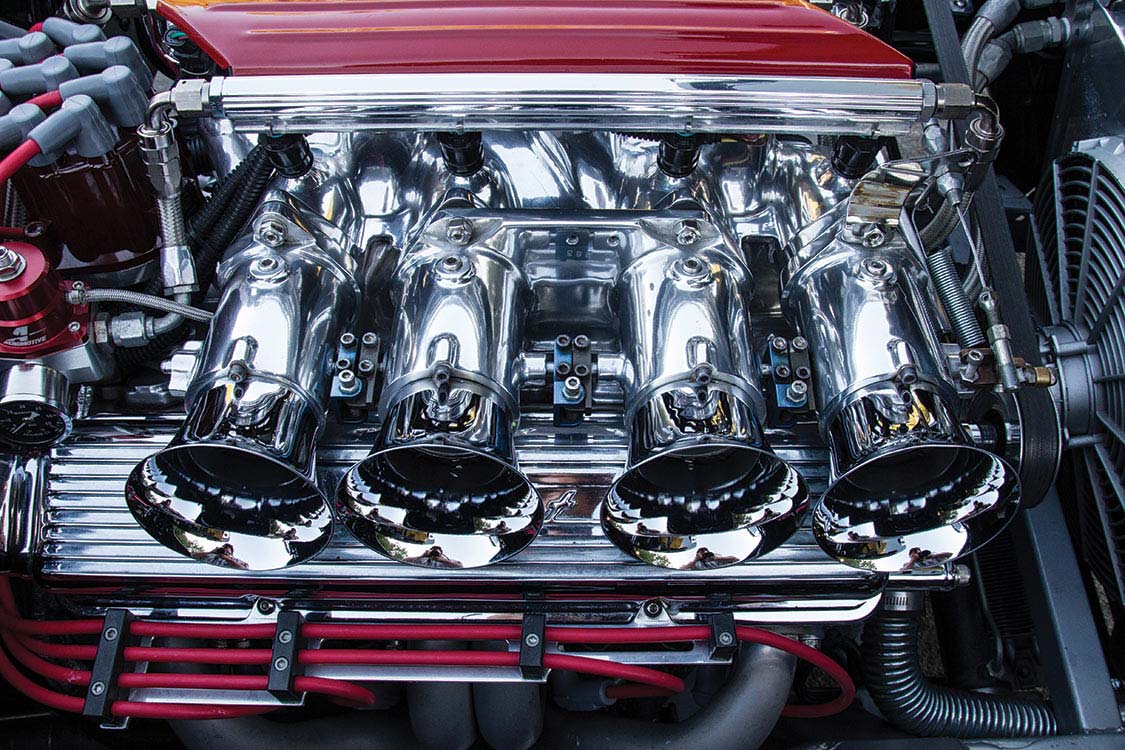
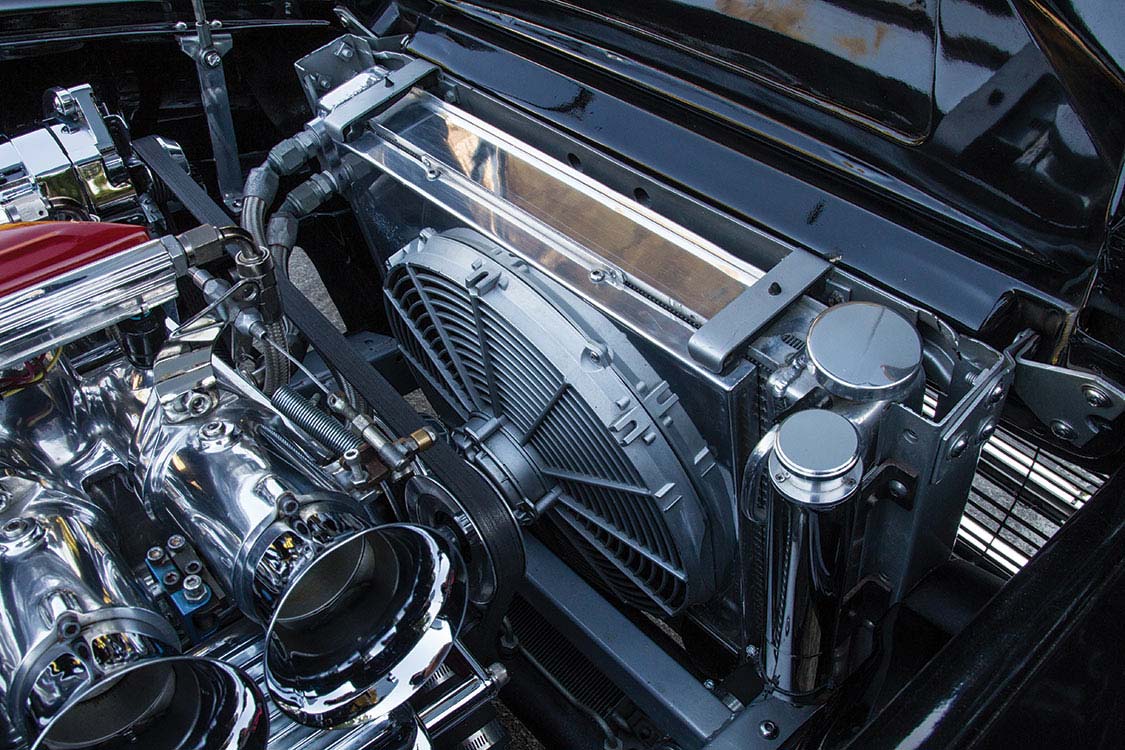
Driving around one day, Butler stopped to see his friends at Mooneyes; Chico Kodama mentioned some unusual used race-purpose fuel injection units that might be available through another contact, an Augie that was a frequent seller at the Long Beach swap meet. “It’s always polite to follow-up on a lead,” Jerry. said “Augie showed me a mind-boggling Hilborn fuel-injection system; I had never seen anything else like it. While Augie told me it wasn’t for sale even before he showed it to me, I immediately started negotiating and bought it the very same day.” The next phase of Corvette modification was underway.
“I brought the exotic system to Bob Ream in Arizona, as I knew his reputation as a fuel-injection guy from his experience earned while racing sprint cars. I tasked him with converting this Hilborn racing system into a working application for my street car.” Jerry said.
The desire to maintain the Corvette factory appearance from the outside required more engineering. Out came that 406-ci engine that had been installed a few years back, to allow for frame and engine mount fabrication so the Hilborn system would fit under the factory hood. That required the engine to sit lower. The same engine was then fitted with the unusual intake manifold and unique fuel-injection system and reinstalled in the vehicle.
“Since it did not look like the typical straight-up Hilborn vertical stack design, I did some research to learn more about the fuel injection,” Jerry said. Making an inquiry directly to the factory, with the stamped serial number in hand, he obtained a certificate of confirmation and authenticity that it was originally ordered and delivered to Engines by Unser in Santa Ana in August 1968. That Unser was Louie, a brother in the Unser clan that included multiple Indy 500 winners Al and Bobby. Louie was a long-time Indy crew chief before starting his Southern California engine shop where he built engines for Bobby, Mario Andretti,and others for their Pikes Peak, sprint, sports car and speedway events. The Hilborn records showed that Jerry’s system was originally set up for methanol, with a small percentage dose of nitro.
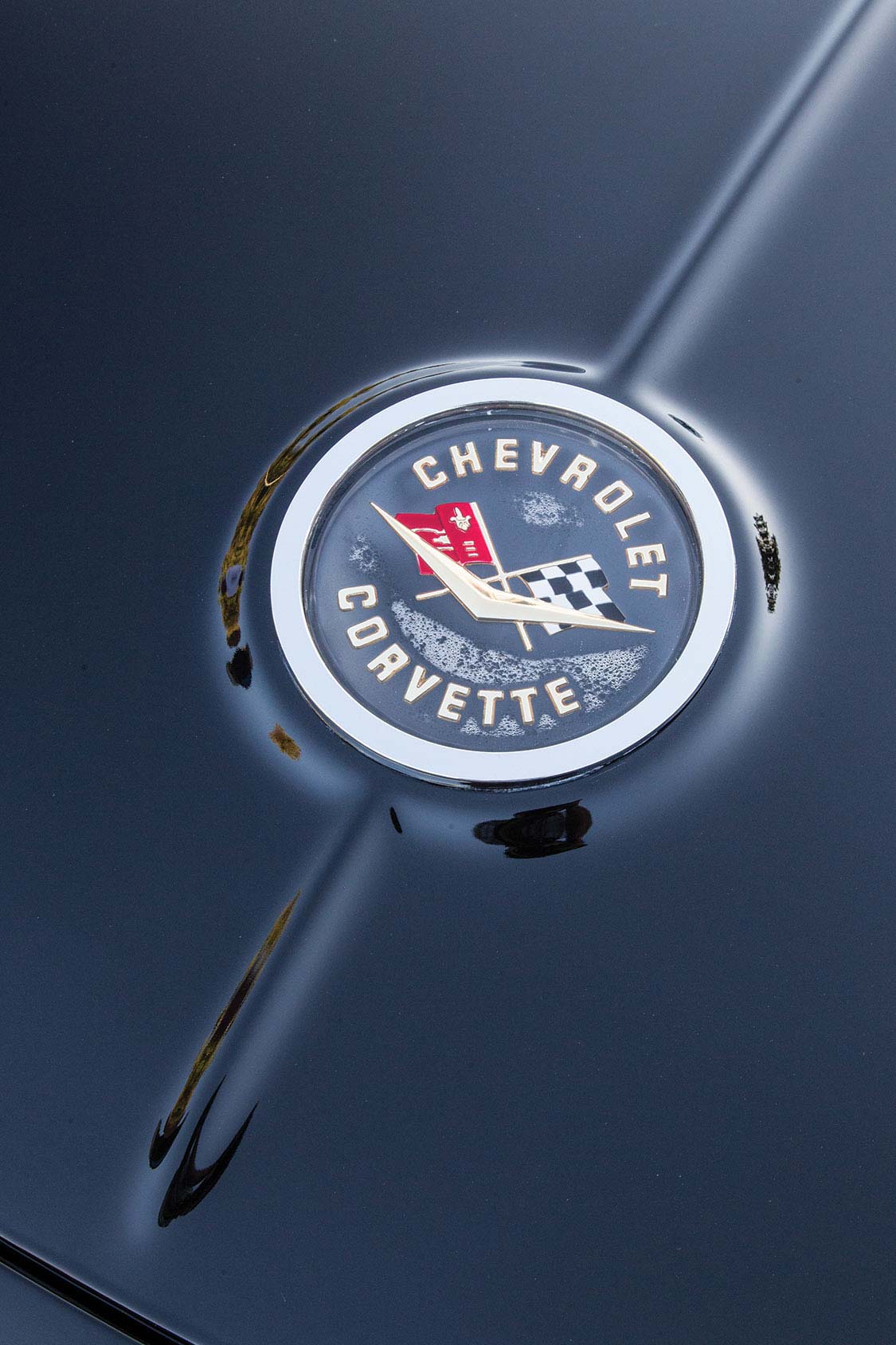
Later, seeking even more power, yet keeping the look and lighter weight advantage of a small-block, Jerry selected a Motown crate engine available from the World Products catalog. “I wanted a 427 and that Hilborn system,” Jerry emphasized. Now up 100 cubes from the original 327, the new 427-ci engine came complete with World’s own cylinder head and four-bolt main block castings, with forged 10.5:1 pistons. Jerry selected a special grind from Comp Cams. When the engine arrived, Jerry asked Bill Mitchell to work his tuning magic. With the as-delivered intake and four-barrel intake carburetor, along with coated S & S sprint car-style headers, dyno results of 564-hp at 5,900 rpm, with 546 ft-lbs of torque at 4,900, are documented. “And with the install of a Hilborn system, typically one should consider it might add at least another 100 horsepower,” Jerry. said For those who just read the Cliff Notes, that’s more than 660 horses, 300 more than the highest-rated Corvette engine back in 1962.
The transformation continued. Driving it around so many miles caused a few body cracks to surface, and the Pearl Fly Yellow paint could not be matched. So, the car came apart again, this time to be coated in deep black. C1 Corvette fans will recognize the countless hours of preparation necessary for the fiberglass body to be ready for the application of the dark hue. In 1962, the factory color was identified as Tuxedo Black. For the interior, noted custom upholsterer Ron Mangus was called upon to reshape the bucket seats before he covered them in stunning red leather in a style similar to the original 1962 pattern. The door panels and trunk also received the same treatment.
As a hot rodder, Jerry is a driver and continues to use his high-powered Corvette frequently. It’s not unusual for he and his wife Barbara to roll from their home in Southern California to Phoenix to visit friends or attend car events. He’s accomplished his goal of keeping the exterior intact while making it his interpretation of a modern machine with significant power and improved handling in a 1962 wrapper. Here it is years later, perhaps answering the rhetorical question, “Where were you in ’62?” with an updated response: having fun in a unique one-off F.I. Corvette.